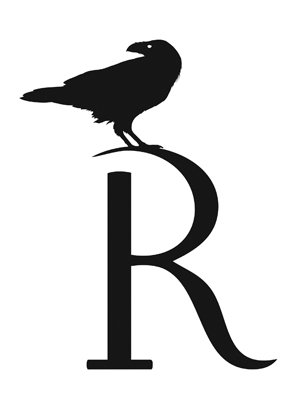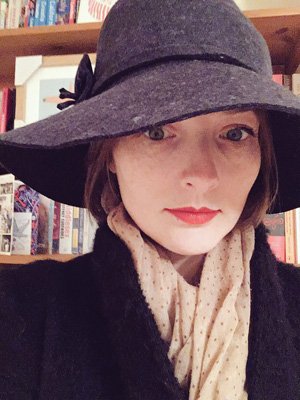Sometimes, we get so close to the subject of crime fiction that it’s easy forget just how popular the genre is. Seeing bespoke indie crime publishers like Hard Case Crime, Orenda Books and Bloodhound thriving, is fantastic. In Scotland, Contraband is devoting itself to Tartan noir, and in the United States, Akashic Books has a nice line in modern noir.
The success of these smaller, nimble crime publishers, and the great authors they’re bringing to their audiences, has inspired some of the bigger publishers to set up their own boutique crime imprints. The latest to arrive is Raven Books, which is part of Bloomsbury Publishing.
Heading up the imprint is Alison Hennessey, formerly a crime fiction editor with Harvill Secker, at Penguin Random House. She is one of the super-talented people who work behind the scenes in publishing, and has helped bring British crime writers like Eva Dolan, Abir Mukherjee and Ruth Ware to market.
“Raven’s arrival could in part be seen as a reaction to the huge growth of the crime market, an understanding of how varied and rich the genre is, and how high the potential sales can be if you have the right books,” she says. “Bloomsbury had published crime prior to my arrival but it tended to be on ad hoc basis when individual editors fell in love with a book, whereas now I’m leading a team who are engaging with the whole area, from acquisitions to marketing and design and publicity, to ensure the whole list is published as well as it possibly can be.”
In January, Raven’s first imprint hit the shelves. The River at Night by Erica Ferencik came out in January, a creepy story taking place in the forests of Maine, where a group of women become stranded and fall under the eye of the inhabitants of the dark woods. In October, the imprint’s second book will surface with Laura Purcell’s gothic ghost story, The Silent Companions.
“Anyone who knows me, knows just how long I’ve been looking to find a ghost story to publish but Laura’s is the first that genuinely sent shivers down my spine,” says Alison. “It’s a wonderfully unsettling read, with a strong, spiky woman at its heart, which I loved. And it’s also beautifully plotted so that you never entirely know whether any of this is real or all the product of Elsie’s imagination.”
And it even looks like she’s poached one of her previous Harvill Secker authors. January 2018 will see the publication of a standalone from Eva Dolan, This Is How It Ends, a whodunit and whydunnit all at once, set on a London housing estate slated for demolition. That will be followed in February by Stuart Turton’s The Seven Deaths of Evelyn Hardcastle.
“My pitch for this is Groundhog Day meets Gosford Park, by way of Agatha Christie. Set in a crumbling mansion in the depths of the countryside, our narrator has to solve the murder of beautiful heiress Evelyn Hardcastle or the day will keep repeating itself over and over again,” explains Alison.
That will be followed by some historical crime fiction by Alex Reeve, the beginning of a Victorian crime series set around a transgender main character. The title of the first book hasn’t been decided, but watch for its richly recreated setting and well-developed characters.
Book editing seems to be a role that’s taken for granted in today’s fast-paced world of publishing. Ebooks come out with poor punctuation, misused words and jumbled sentences all the time. Meanwhile, there are instruction books available that advise self-published authors on how to edit their own work. But good editing shows and if you’ve read any of Alison Hennessey’s authors you won’t find any of the errors outlined above.
What editors do is changing, too. As she points out, sitting down with the actual book is the luxurious part of it. There’s a lot of admin involved, as well as marketing, research, attending festivals, visiting foreign publishers, briefing jacket designers and sorting out the metadata for the next digital upload.
Then there’s the commissioning, which involves finding the right authors, negotiating with agents and overseas publishers, acquiring the work and then working on the manuscripts.
“When I’m working with my authors on the edits, I’m looking at the overall shape of the manuscript – does it unfold smoothly, is it well paced and plotted, does one key revelation come too early or another too late? Are the character motivations clear and understandable or do we need more backstory? Are there any plot holes we might need to tidy up?”
Vivid characters
Alison continues: “And then, line-by-line, I’m looking at the words the writer has used; is that sentence too convoluted, is there some repetition here that could be trimmed back, does this particular word jar or seem out of place or do we need more detail here to bring it to life? As writers have such vivid pictures of their characters and settings, we often need to work together to make sure that comes through on the page so the reader can build their own mental pictures.
“Once the author and I are completely happy with the book, then it gets handed over to a copy-editor and they are the real experts on grammar and punctuation. They put me to shame!”
What advice has she got for would-be authors? First up, Alison recommends you find an agent. They’ll not only promote you but will also sort out issues like translation rights, audio, film and TV rights, should you be successful. If your writing is good, an agent will represent you and just like publishers are looking for crime books, agents are looking for crime writers.
Then there’s how you write. “My advice is to be aware of the market but don’t write for the market; publishing is a slow process, it generally takes at least a year from when I acquire a book to when it is actually published, and by that point the market could be very different so don’t try and write what is selling now. Write the best story you think you can write, write a story that you think hasn’t been told – what gets me most excited in a submission, after the voice, is originality and ambition – and really think about who might want to read it,” says Allison.
You can read our review of The River at Night here, and to keep up to date with Raven you can follow the company on Twitter here.

